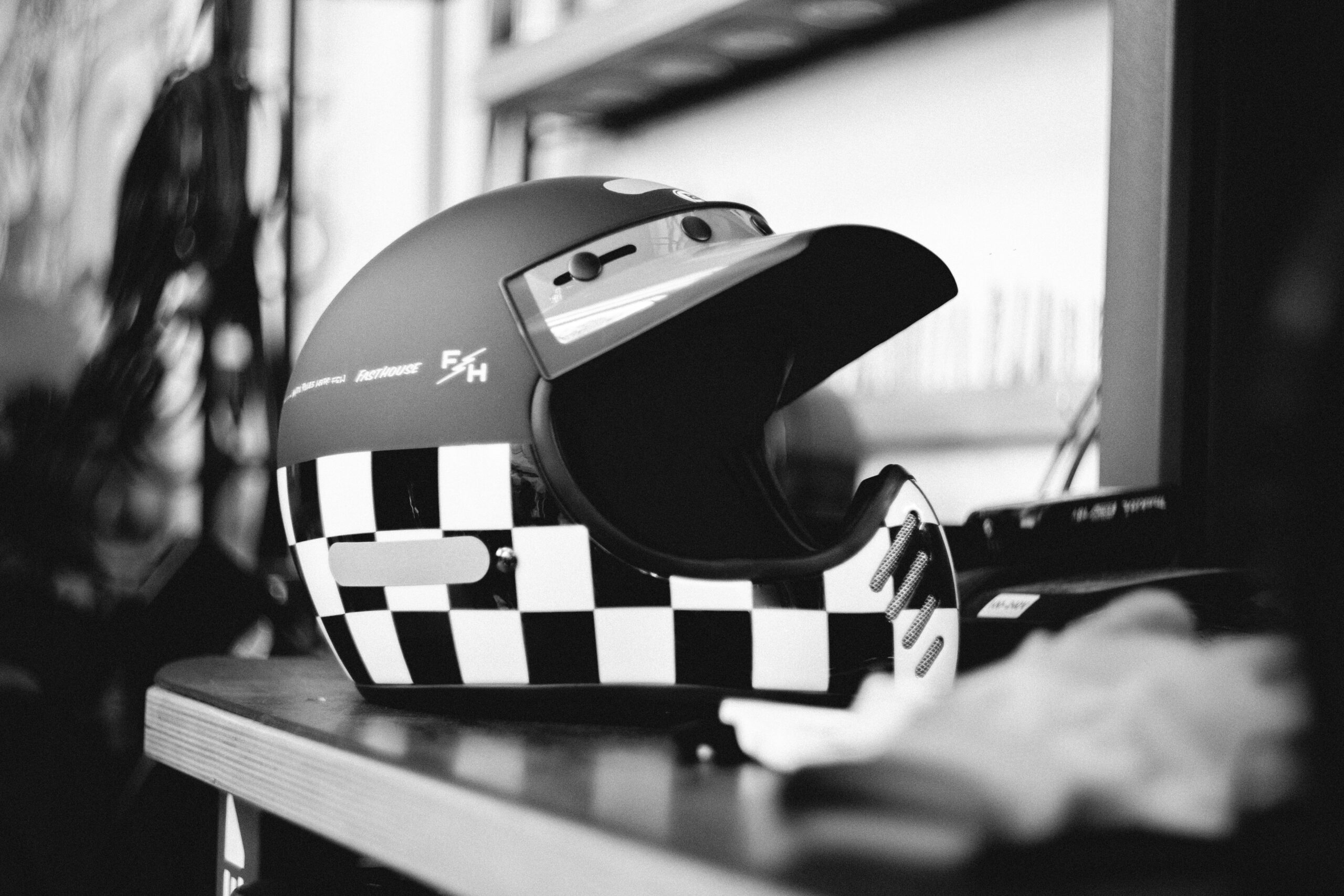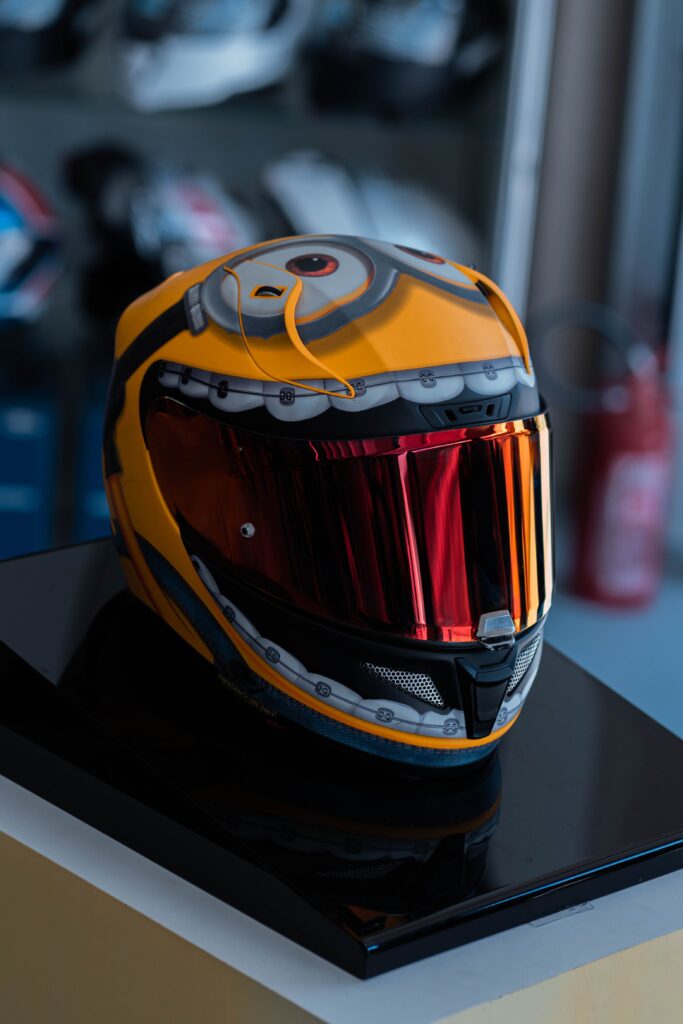
It’s impossible to describe the sensation of riding on a broad road with the wind in your face. However, with the added freedom that motorcycling gives comes the responsibility of riding a suitable, safe motorcycle and wearing adequate safety gear. In this article, we’ll go over everything you need to know about choosing the safest motorcycle helmet.
In 2015, motorcycle helmets were project to have saved 1,772 lives, with another 740 lives potentially spared if the rider had worn one. Whether or whether it is require by law in your state, you should ALWAYS ride with a motorcycle helmet. We’ve put up a guide on what to look for when choosing the best motorcycle helmet, including everything from helmet types and safety requirements to helmet fit and safety features.
Contents
The Safest Motorcycle Helmet Type
There are many different types of helmets, but the most prevalent are full face, 34, and 12 helmets. The full-face helmet is the safest of the three alternatives.
A full-face helmet protects your head and neck to the fullest extent possible. A full-face helmet also shields you from the elements, whether it’s severe weather or bugs and debris impacting your visor. The 34 and 12 helmets lack a chin bar, which is one of the distinguishing features of a full-face helmet. According to one European study, 50% of all significant hits following a vehicle accident occur on the chin. As a result, while selecting how much protection to wear, motorcyclists should consider how much protection they wish to wear.
Motorcycle Safety Helmet Features
Current helmet technology includes an EPS (expanded polystyrene) foam inner lining to alleviate stress. A comfort liner, which is sometimes misunderstoodd for a protective component but does provide some cushioning, is also include. A helmet should include EPS foam in the lower half to properly protect the face and jaw.
When buying a helmet, look for one with a shell-built structure. It’s your head’s first line of defense, shielding it from direct contact with the road. Look for another helmet if the one you’ve picked doesn’t have a thermoplastic or reinforced composite shell-like polycarbonate.
The second feature to look for is an impact-absorbing lining. As the name says, it is the interior liner of the helmet that not only gives comfort to your top head but also absorbs shock during accidents. In the case of a catastrophic head injury, it is your second line of defense.
The third feature is the chin strap. A helmet can only serve its purpose if it is securely fasten.
Does Investing in Full-Face Motorcycle Helmets Ensure Better Safety?
The truth is that having more money does not automatically entail having more security. Helmet manufacturers must comply to stated criteria such as those set out by the Snell Foundation, the Department of Transportation, and the current European Safety Standard 22/05. These guidelines assist in the dissemination of a high-quality product to a wider audience.
Aside from those criteria, the materials used to make the helmet, the functions given, and the aesthetics of the helmet all have a role in the price.
Motorcycle Helmet Safety Standards
A variety of safety rules apply to safest motorcycle helmet, and it can be difficult to figure out which ones apply to you. The most important factor to consider is the helmet’s safety rating. The most significant safety regulations and what you should know about them are as follows:
Snell Memorial Foundation (M-95 / M2000)
The Snell Foundation certification is not require by law anywhere. However, they go above and above the minimum criteria to thoroughly test helmets in a number of ways. Bicycling, karting, and professional racing are among the activities that are put to the test. The following are the elements that they look for in terms of safety:
- Impact Testing – Using controlled impacts, the impact test replicates various impact surfaces. The idea is to figure out how much gravitational force (G) or acceleration there is. If the peak acceleration in any test exceeds a particular level, the helmet is reject.
- A head form is positioned at a 135-degree angle with its face looking downward for the Positional Stability (Roll-Off) Test. The helmet is adjust to the head shape, and the straps and buckles are adjust for a perfect fit. The weights are connect by a wire rope and then dropped from a specified height. The test is then perform with the helmet turn 180 degrees. The helmet must not roll off the wearer’s head in order to pass the test.
- The helmet is put on a head form with the chin strap affixed under a device that represents the jaw in the Dynamic Retention Test. A 23 kg weight is apply to the jaw piece for around one minute. By removing the 23 kg weight and introducing a 38 kg mass in a sudden directed fall, the retention system is put to the test. If the retention system cannot handle the mechanical stresses or if the maximum instantaneous deflection (stretch) exceeds 30 mm, the system will fail.
Chin Bar Test
- Chin Bar Test – The chin bar of the test helmet is orient upward and fastened to a base. To strike the centre area of the chin bar, a 5 kg weight is lowered. The chin bar’s maximum downward deflection shall not exceed the specified distance.
- For the shell penetration test, the test helmet is attach to a base. A sharp-pointed object weighing three kilograms is toss from a specified height. The striker must not breach the helmet or even make a brief contact with the head while within it.
- Face Shield Penetration Test – An air pistol is use to fire three times down the midline of the face shield (also known as a visor) install on a test helmet. At a speed of roughly 500 km/h, the weapon discharges sharp, soft lead pellets (310 mph). The pellets must not penetrate the visor to pass the test.
D.O.T. (Department of Transportation FMVSS218)
FMVSS218 is the technical standard in the United States that defines the minimum standards that a helmet manufacturer must certify against. The DOT helmet standard certification is what it’s known as in general. The exams are quite similar to the Snell Memorial Foundation’s tests. Nonetheless, depending on the impact, intensity, and test equipment used, the estimated values differed slightly. As a result, the Snell test is more difficult to pass than the DOT test. Another thing to keep in mind is that the helmets are test in the manufacturer’s own laboratories. Snell, on the other side, looks through and certifies every helmet that comes in from any manufacturer.
European Standard 22/05
The European standard is quite close to the DOT and Snell testing. The numbers and tests for most criterion varies somewhat, and there is also a retention standard testing for slippage, abrasion, retention, and durability. The ECE 22/05 standard contains a helmet rigidity test that is not include in the Snell or DOT standards.
European BSI 6658-85 Type A
A second standard for measuring helmets exists in Europe, and it is quite similar to the Snell testing procedure. In terms of passing values on several tests, the Snell standard differs somewhat. Despite this, numerous categories refer to the benefits as being “the same as the Snell M2005 test.” Chin strap slippage, retention, and abrasion testing are all part of the BSI tests, which are also part of the ECE 22/05 testing.
SHARP
Only the United Kingdom (United Kingdom / England) has access to the SHARP helmet testing and grading system. It evaluates helmets using a star rating system rather than a pass/fail system, and it analyzes the helmet’s impact protection using the same testing as the other standards. On a scale of one to five, the stars are allocate.

When To Replace Your Motorcycle Helmet
Even if you haven’t had any direct strikes to the head that may compromise the helmet’s impact protection, most experts agree that helmets should replaced every five years. Helmet makers and the Snell Memorial Foundation have issued this recommendation after studying the effects of regular use on a helmet.
We are unaware of any evidence that a well-maintained, undamaged helmet would suddenly lose its ability after five years. Deterioration is a gradual process that can accelerated or delayed by a number of circumstances.
Deterioration of Motorcycle Helmets
Helmet degeneration is caused by normal wear and tear, hair oils, physiological fluids, and cosmetics. Cleaners, paints, fuels, and other substances have an impact on the lining materials and overall helmet function. Here are some tips for keeping your helmet in good shape:
- Follow the manufacturer’s instructions while caring for your helmet.
- Use the most gentle soap that has been recommended.
- A helmet decomposes and loses its protective properties when it is subjected to harsh cleaning solutions. Cleaning solutions based on petroleum should avoided, especially when wearing polycarbonate helmets.
- Keep your helmet’s face shield clean. Mild soap and warm water, together with a towel, are generally sufficient. If it becomes scratched and your vision is impaired, replace it.


